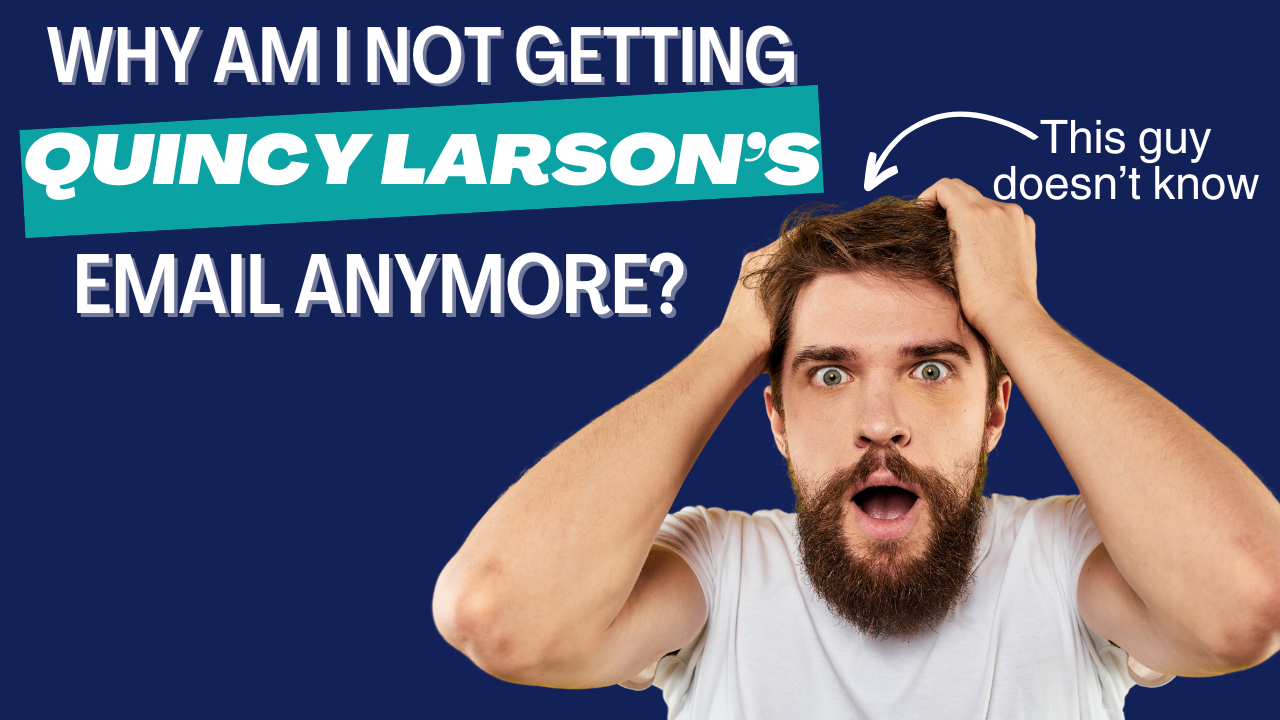If you're not getting Quincy Larson's email each week, and you want to get them again, do the following:
Fill out this form. It takes less than a minute.
Search your spam folder for "Quincy Larson" and if you find any of my emails in there, mark them "not spam"
Why did I stop receiving Quincy's emails, though?
For the past 8 years, I've sent out a weekly email: "5 freeCodeCamp Resources that are worth your time."
These include free books, courses, and tutorials created by the global freeCodeCamp community – mostly on math, programming, and computer science topics.
The freeCodeCamp community is so prolific that I have a difficult time choosing just 5 resources to share each week.
Up until May 2024, my email list was more than 7 million recipients. But we decided to require all recipients to opt-in again. This way we didn't have to send so many emails.
But you may have missed the announcement. (I mentioned it in three separate emails I sent in April 2024.)
So again, you can still opt-in again using this form.
Why does Quincy's email require double opting in? I've never heard of any other email newsletter requiring this.
Even though we had 7 million weekly recipients – all of whom explicitly chose to opt in when they were creating their freeCodeCamp account – some people told me they rarely opened these emails, or reported finding them in their spam folder.
By only sending emails to people who double opt-in, we can increase the likelihood that all of these people actually want the email, and will actually open them and read them.
Also, sending emails using Amazon's SES service is pretty inexpensive. You can send 10,000 emails for a penny. But sending 7 million emails still added up to $700 we were spending each week to send the email.
Now, after the double-opt-in, our cost of sending out the email newsletter is only a few dollars each week.
Some other interesting facts about Quincy's "5 freeCodeCamp resources" email
You can read through the entire archive of all of my emails, and search through them, thanks to Sourabh Joshi, who created this archiving bot that publishes them on a GitHub repository each week.
My emails are plain text. I don't use any HTML, CSS, or images. I do this because plain text is accessible, and looks good in any email client – on desktop, mobile, or even on the display of a smart watch.
Also, I don't include any sort of tracking. I'd rather be respectful of people's privacy than know how many people opened my email or clicked on a particular link. And it's nice to show people the exact URL of the link they're clicking on, so they know exactly what they're opening.
In short, I hold in high regard the fine people who sign up for my weekly email. I don't want to invade their privacy or waste their time.
I hope you find these emails and the open learning resources I share to be worth your time. 🏕️

